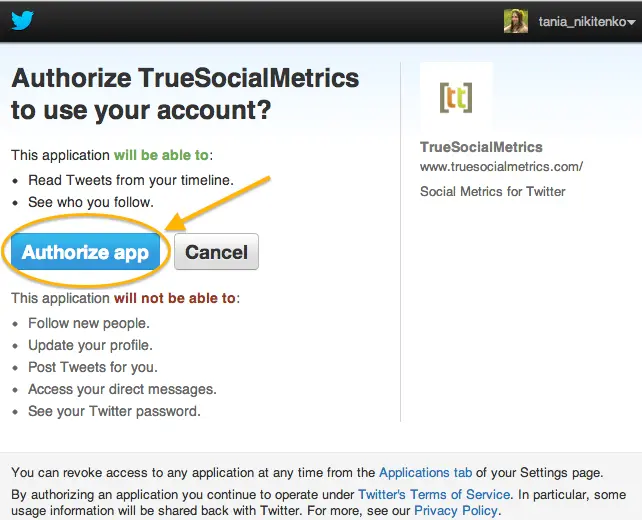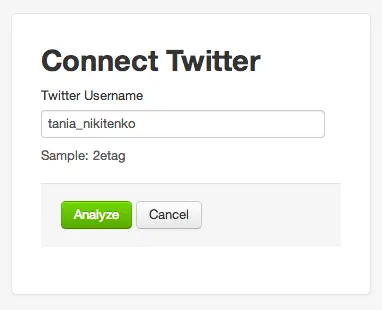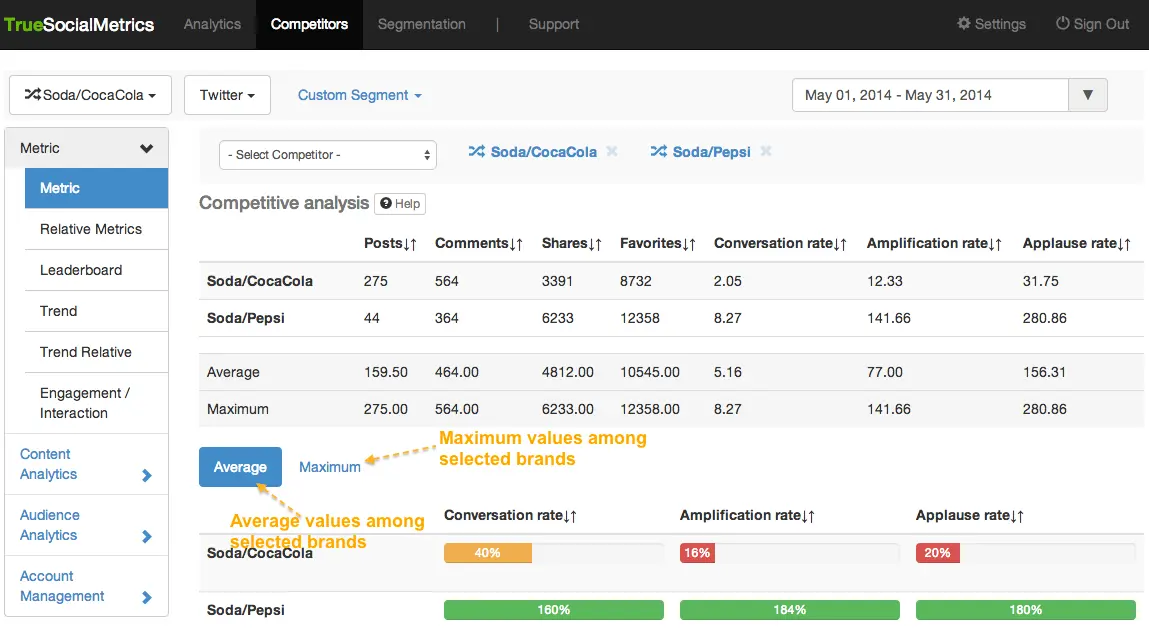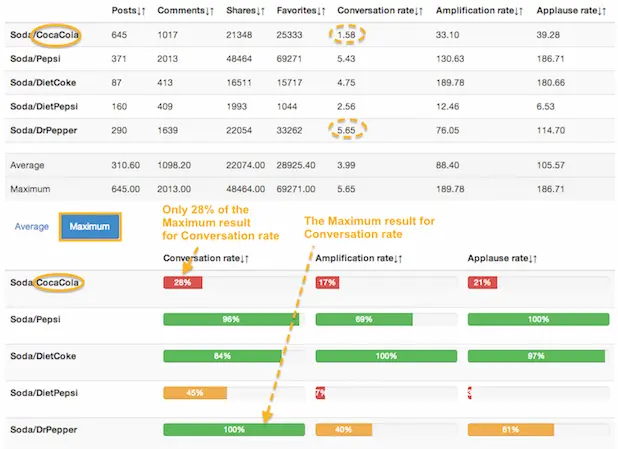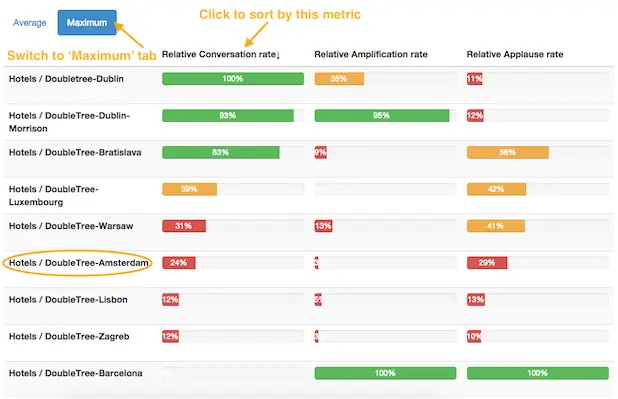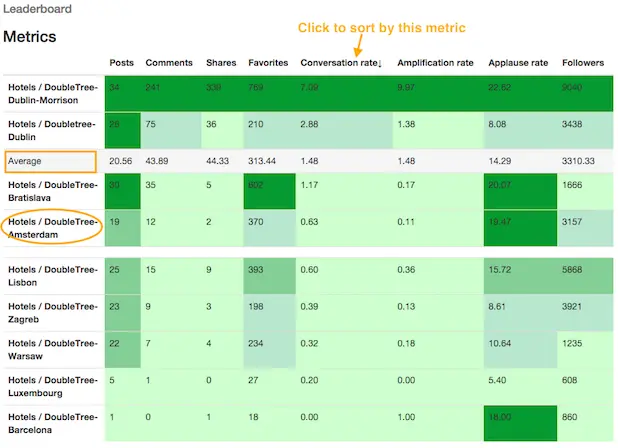Comparing to competitors
The best way to know if your results are good or not is to compare them to your competitors’ results. Every kind of analysis that is available for your social media accounts could also be calculated for your competitors’, with no login credentials required. The only exception to this is the Economic value metric, which can only be calculated for your account.
How to set up Competitive analysis
To compare your results to those of your competitors, all you need to know is the link to their social media profiles. You don’t need to know your competitors’ login credentials to do this We use your own account login in credentials for Twitter/YouTube/Tumblr to access the API of these social networks when you connect any accounts.
Steps:
-
Go to the Settings page, then the Account section, and then create an account for your competitor's data.
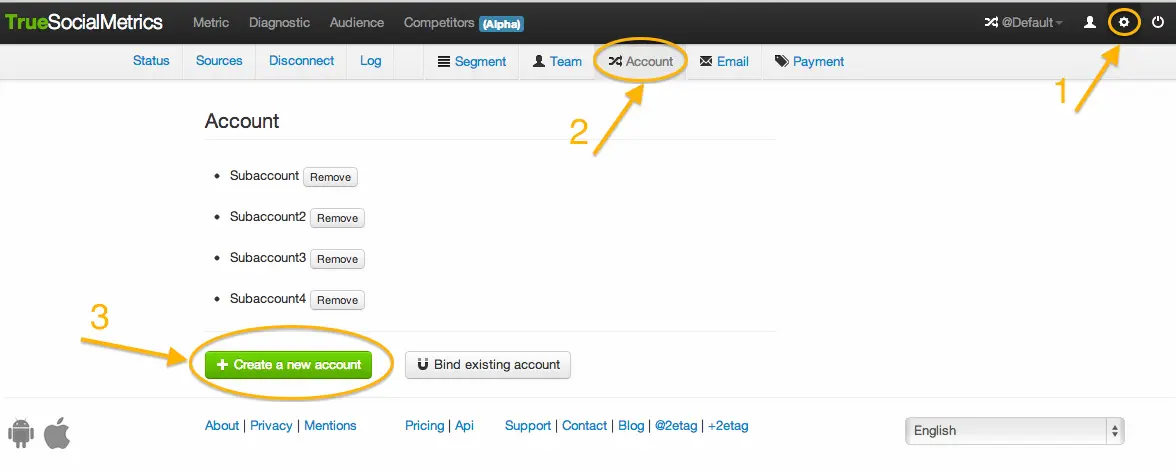
-
After creating a new account, you will be automatically redirected to the Metric page where the newly created account will be automatically selected from the Accounts selector at the top left corner of the page. From here, you can connect your competitor's social media pages to that new account.
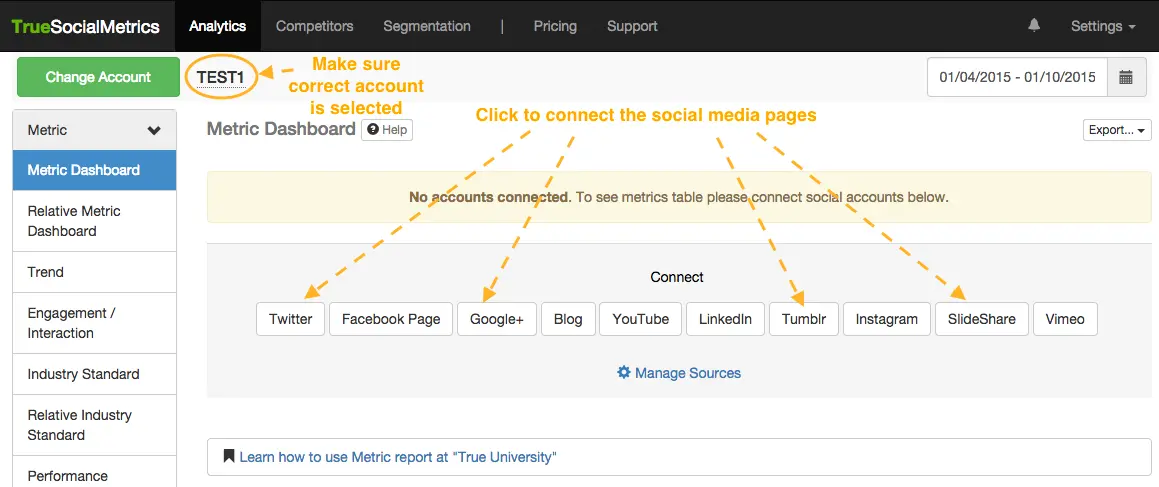
Note: when you connect a competitor's social media account for Twitter, YouTube, or Tumblr, you will be asked to authorize TrueSocialMetrics for read-only access to your account. This is necessary to provide TrueSocialMetrics with access to APIs for these social networks. It will use your own account login credentials, not your competitor's.
After you click the ‘Authorize app’/‘Grant access’/‘Allow’ button, you will be redirected to a form where you will then need to input the competitor’s account link or Twitter handle. That’s all you need to do. You don’t need to know competitor’s login credentials.
-
Repeat steps 2 and 3 for all of the competitors that you wish to use in your analysis.
-
Go to the Competitor page and select a competitor’s account from the ‘Competitor’ drop-down menu at the top left corner of the page. You can select as many accounts as your subscription type allows to compare simultaneously.
How to interpret results
Since you and your competitors will have a different number of followers, more accurate results can be obtained from the Relative metrics dashboard.Here, the metrics are averaged based on the number of followers so that they show the Conversation, Amplification, and Applause per 1000 Followers (this is the default setting). This helps you to accurately compare several accounts that have a different number of followers.
At the bottom of the page, you can use a switcher to select per how many followers you wish the metrics to be calculated (per 1, or 10, or 1000 etc.). This make it easier to report to your boss that you have 5 Likes per post per 1000 Followers, rather than 0.005 of a Like per post per 1 Follower.
There are 2 reporting views you can switch to:
- Average - an industry standard, calculated as the average value for all metrics among the accounts you have included in the report.
- Maximum - the best industry result, calculated as the maximum value of metrics among the accounts included in the report.
For example, in a screenshot below shows that Coca Cola has reached only 28% of the maximum possible result for Conversation rate on Twitter, based on the results from Coca Cola and 4 of their top competitors’ results (Maximum tab).
Using Competitors lists
Group accounts with Competitors lists to easily compare different clusters of brands and analyze your account in different contexts.
You can group accounts based on:
- geographical location;
- brand;
- type of business (e.g. Franchised restaurants or Owned restaurants);
- type of product/service (e.g. Full service hotels or Select service hotels) etc.
For example, we can analyze DoubleTree Amsterdam hotel in the context of 5 different groups of hotels, using 5 Competitors lists:
- DoubleTree-Amsterdam-Competitors: Is it better than it’s Competitors in Amsterdam?
- Amsterdam-Hilton-Hotels: Is it better than other hotels of Hilton Group in Amsterdam?
- DoubleTree-Europe: How it’s performing compared to other DoubleTree hotels in Western Europe?
- DoubleTree-Western-Europe: How it’s performing compared to other DoubleTree hotels in a whole Europe?
- DoubleTree-Europe-capitals: How it’s performing compared to other Europe DoubleTree hotels located in capital cities?
How to create a Competitor list:
- Go to the Settings page, then the Competitors lists section, and then click on 'Create' button.

- In the form, you will need to specify the Name of the Competitor list and select the needed accounts. Don’t forget to Save the form.
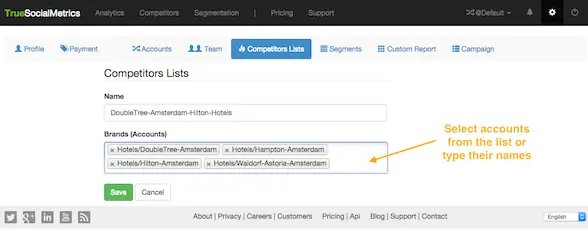
- Go to the Competitor page and select a new Competitor list from the ‘Competitor’ drop-down menu at the top left corner of the page. And all is ready to analyze.
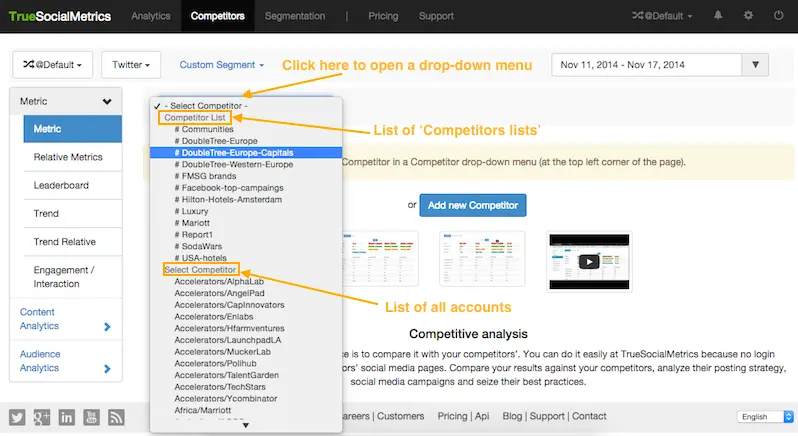
By using 5 Competitors lists from the example above we've learned that DoubleTree Dublin hotel is the best DoubleTree hotel among Europe hotels located in capital cities:
According to the reports, Dublin hotel is also the best hotel in Western Europe and whole Europe among all DoubleTree chain. And Amsterdam DoubleTree is only #3 among all Hilton hotels in Amsterdam. We can also use Leaderboard report to compare the results to Average:
